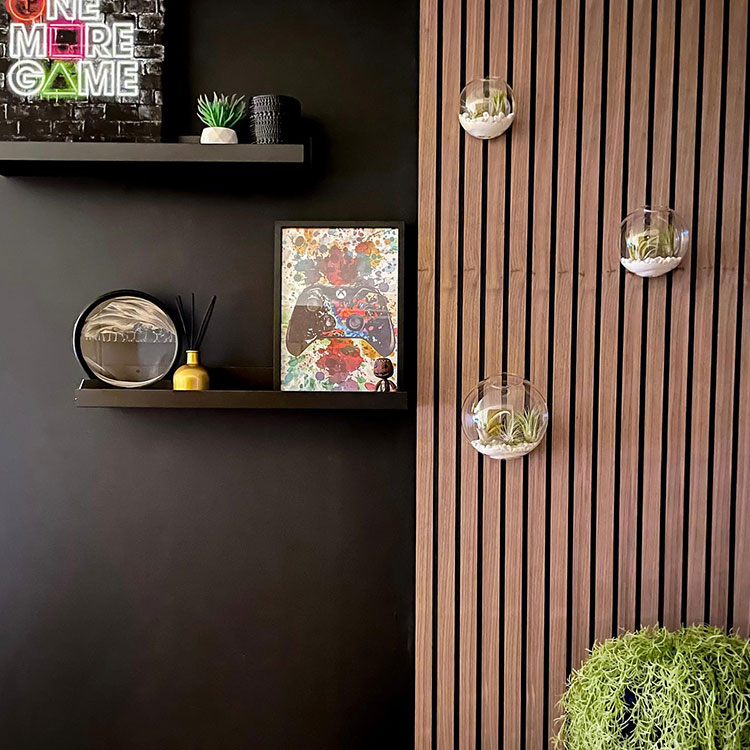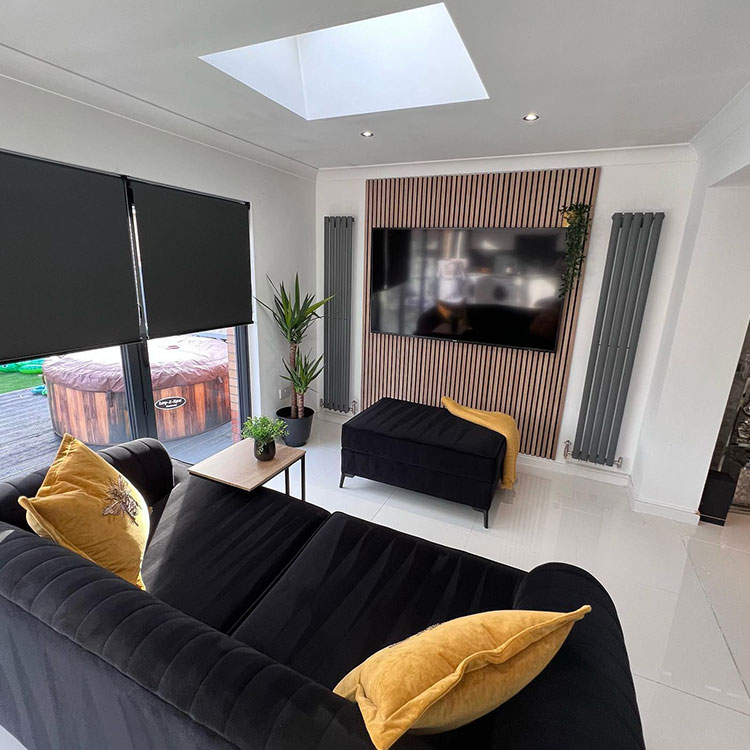The fireproofing performance of sound-absorbing materials in theaters, dance halls, auditoriums, multi-functional halls, gymnasiums and other public gathering places is crucial. Polyester fiber sound-absorbing panels have been tested for fire protection parameters by the National Fire Protection Inspection Center. The results show that they have good fire protection performance and meet the requirements of national standards.


Wooden sound-absorbing panels are widely used in conference rooms, TV stations, studios, theaters, audio-visual rooms, opera houses, leisure and entertainment cities, hotels, multi-purpose halls, concert halls, bars, restaurants, shopping malls, schools, auditoriums, gymnasiums, KTV, etc.
When the sound-absorbing panels are installed on the base material, the levels are classified according to the amount of formaldehyde released by the base material. There are E0, E1, and E2 levels. E0 level is the most environmentally friendly, followed by E1, and E2 formaldehyde release is relatively high. It's high. If it is directly used for indoor installation, the E1 level is qualified.
Effect of sound-absorbing panels:
①Sound-absorbing tip. A sound-absorbing wedge is a special structural material used for sound-absorbing panels in strong sound-absorbing fields. It is shaped and cut from porous (or fibrous) materials to make a cone-shaped or wedge-shaped sound-absorbing body, which is strong and durable. Deformation. Sound-absorbing spikes are suitable for strong airflow environments. The main target is a high-quality anechoic chamber. It is more effective in absorbing low frequencies and can eliminate standing waves to meet the requirements of eliminating echo. The low cut-off frequency sound absorption coefficient is greater than 0.99. Compared with ordinary sound-absorbing tips, V-shaped and W-shaped sound-absorbing tips made of polyester take up less space and are more reasonable in price.
②Diffusion body. In addition to having all the functions of flat sound-absorbing panels, diffuser sound-absorbing panels can also conduct sound waves at different angles through their three-dimensional surface, eliminating blind spots in the diffusion process of sound waves, improving sound quality, balancing sound, thinning accents, and weakening treble, to compensate for the bass.
A three-dimensional triangular or cylindrical groove is opened on the front of the medium-density fiberboard, and a structural sound-absorbing material is opened on the back with round holes. The surface is spray-painted (the color can be selected according to customer requirements), and the back is pasted with a fireproof sound-absorbing board. It is both beautiful and effective as a sound-absorbing panel.
MUMU Sales Contact :
Post time: Jan-03-2024







